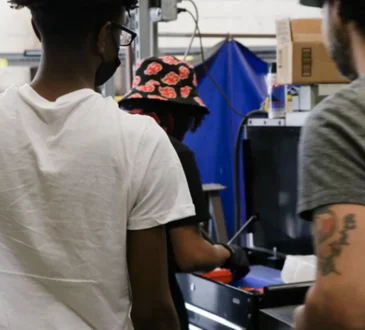
Curriculum implementation is a fundamental process in education, ensuring that the carefully designed educational plans and materials are put into practice in classrooms. It is the bridge between curriculum development and classroom instruction, and it plays a pivotal role in shaping the learning experiences of students. In this article, we will explore the significance of curriculum implementation, the key steps involved, and the challenges educators face in this critical phase of education. Let’s hear from pros like Harit Gaba.
Understanding Curriculum Implementation
Curriculum implementation refers to the process of translating the written curriculum (what is planned and intended) into the enacted curriculum (what is taught and learned in the classroom). This process involves a series of steps and actions to ensure that educational objectives and content are effectively delivered to students. It is a dynamic and complex process that requires collaboration among educators, administrators, and other stakeholders.
The Significance of Curriculum Implementation
- Bridging Theory and Practice: Curriculum implementation bridges the gap between educational theory and classroom practice, ensuring that the intended learning outcomes are achieved.
- Student-Centered Learning: Effective implementation allows educators to adapt teaching strategies to meet the diverse needs of students, promoting more student-centered and engaging learning experiences.
- Quality Assurance: It serves as a quality control mechanism, ensuring that the educational goals set during curriculum development are met consistently.
- Accountability: Curriculum implementation helps in assessing and holding educators accountable for their teaching practices and the achievement of learning outcomes.
Key Steps in Curriculum Implementation
- Orientation: Educators and other stakeholders must be familiarized with the curriculum documents, including objectives, content, and assessment criteria.
- Planning: Teachers create lesson plans and instructional strategies that align with the curriculum’s goals and objectives.
- Instruction: Teachers deliver the lessons, using various teaching methods, resources, and materials that are in line with the curriculum.
- Assessment: Formative and summative assessments are conducted to gauge student progress and understanding of the curriculum.
- Monitoring and Evaluation: Ongoing monitoring and evaluation help educators and administrators identify areas of improvement and make necessary adjustments.
- Feedback and Reflection: Teachers and administrators should provide feedback to one another and engage in reflection to enhance the curriculum implementation process continually.
Challenges in Curriculum Implementation
While curriculum implementation is essential, it comes with its fair share of challenges:
- Resource Constraints: Limited resources, including time, materials, and training, can hinder effective curriculum implementation.
- Resistance to Change: Resistance from educators who are comfortable with their existing teaching methods can impede the adoption of new curricula.
- Lack of Alignment: If teachers and administrators do not fully understand or buy into the curriculum, it may not be effectively implemented.
- Assessment Issues: Designing and conducting appropriate assessments that align with the curriculum can be challenging.
- Diverse Learner Needs: Meeting the diverse needs of students, including those with different learning styles and abilities, can be complex.
Curriculum implementation is a critical component of the education process, serving as the bridge between educational planning and classroom instruction. It plays a pivotal role in ensuring that students receive a quality education that aligns with the intended learning outcomes. While challenges may arise during this process, educators, administrators, and policymakers must work collaboratively to address them and continually improve curriculum implementation practices. By doing so, we can enhance the quality of education and empower students to achieve their full potential in an ever-changing world.




